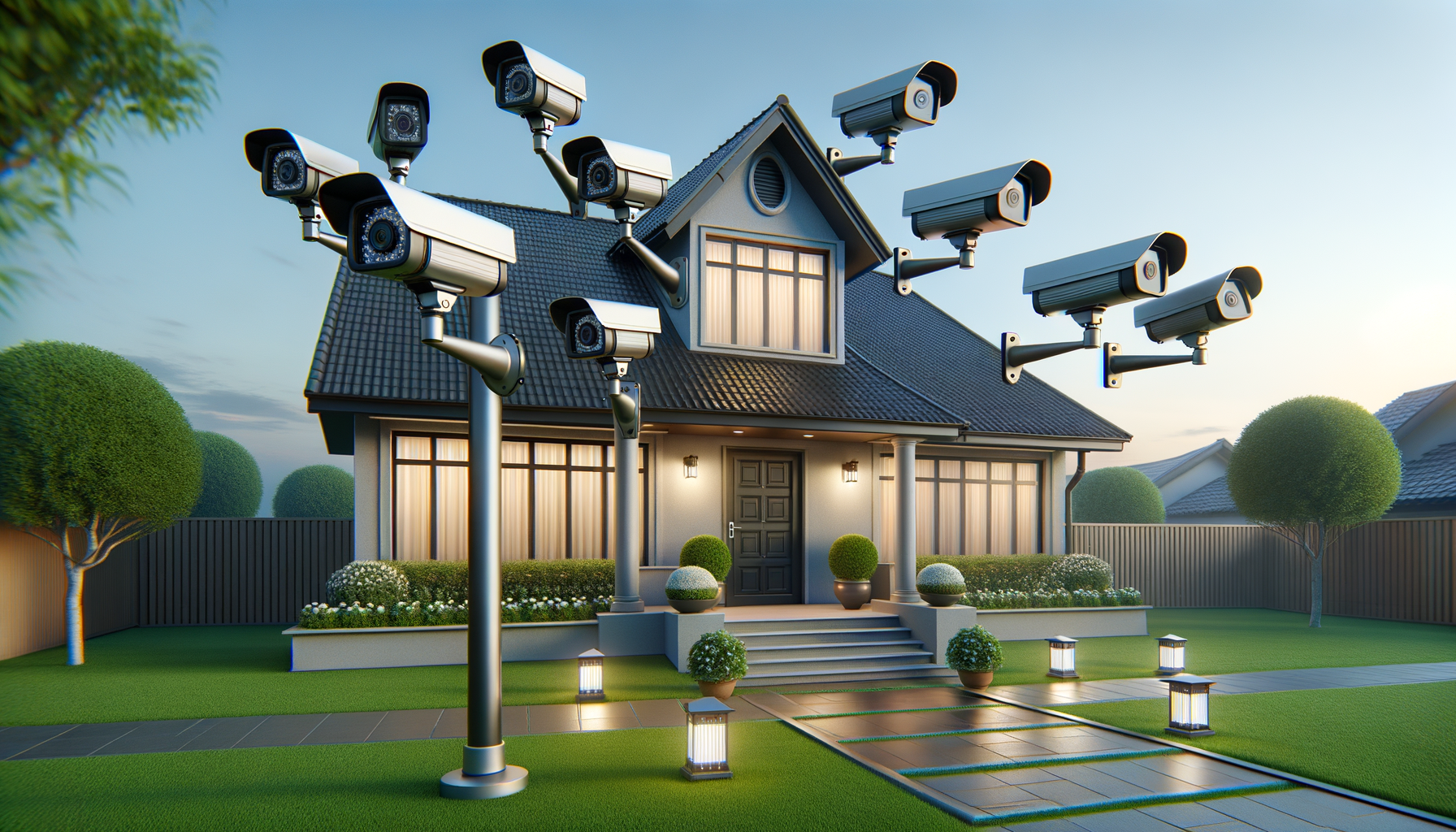Introduction to Surveillance Cameras
In today’s fast-paced world, ensuring the security of one’s home has become paramount. Surveillance cameras play a crucial role in this regard by offering a vigilant eye over our properties. These devices are not just about capturing footage; they provide peace of mind and a sense of control over one’s environment. With advancements in technology, surveillance cameras have evolved to offer a range of features that cater to the diverse needs of homeowners. From motion detection to night vision, these cameras are designed to help you stay aware of nearby activity, making them an integral part of modern home security systems.
Types of Surveillance Cameras
Surveillance cameras come in various forms, each suited to different environments and security requirements. Understanding the different types can help you make an informed decision when choosing the right system for your home.
- Bullet Cameras: Known for their long cylindrical shape, these cameras are ideal for outdoor use. They are often equipped with protective casings to withstand harsh weather conditions.
- Dome Cameras: These cameras are typically used indoors and are recognized by their dome-shaped housing. They offer a wide field of view and are often used in retail environments.
- PTZ Cameras: PTZ stands for Pan, Tilt, and Zoom. These cameras allow you to control the camera’s movement remotely, providing flexibility in monitoring large areas.
- Wireless Cameras: Offering easy installation and flexibility, wireless cameras connect to your home network, allowing you to view footage remotely via a smartphone or computer.
Each type of camera offers unique advantages, and selecting the right one depends on your specific security needs and the layout of your property.
Key Features of Modern Surveillance Cameras
Modern surveillance cameras are equipped with a plethora of features that enhance their functionality and effectiveness. These features are designed to provide comprehensive security coverage and user convenience.
- Motion Detection: This feature alerts you to any movement within the camera’s field of view, ensuring you are notified of unusual activity.
- Night Vision: With infrared technology, cameras can capture clear footage even in low-light conditions, making them effective around the clock.
- Two-Way Audio: This allows you to communicate with individuals on your property, which can be useful for greeting visitors or deterring intruders.
- Cloud Storage: Many cameras offer cloud storage options for footage, ensuring that your recordings are safe from physical damage or theft.
These features collectively contribute to a robust security system that not only records events but also provides real-time interaction and analysis.
Considerations When Installing Surveillance Cameras
Installing surveillance cameras involves more than just purchasing equipment; it requires careful planning and consideration of various factors to ensure optimal performance and coverage.
- Location: Determine the most vulnerable areas of your property, such as entry points and blind spots, to position your cameras effectively.
- Camera Resolution: Higher resolution cameras provide clearer images, which can be crucial for identifying individuals or details in footage.
- Lighting Conditions: Consider the lighting in the areas you wish to monitor. Cameras with good low-light performance or additional lighting may be necessary.
- Privacy Concerns: Ensure that your cameras do not infringe on the privacy of neighbors or public spaces, as this can lead to legal issues.
Taking these considerations into account will help you design a surveillance system that is both effective and respectful of privacy.
The Future of Home Surveillance
The future of home surveillance is poised for exciting developments as technology continues to advance. Integration with smart home systems is becoming increasingly common, allowing for seamless control and monitoring through a single interface. Artificial intelligence is also playing a significant role, with features such as facial recognition and behavior analysis becoming more accessible. These innovations promise to enhance the accuracy and efficiency of surveillance systems, providing homeowners with even greater security and peace of mind.
Furthermore, as the Internet of Things (IoT) expands, surveillance cameras will likely become more interconnected with other smart devices, offering integrated solutions that extend beyond traditional security measures. This evolution will enable homeowners to not only monitor their properties but also manage energy usage, control lighting, and automate various aspects of home management.
Conclusion: Enhancing Home Security with Surveillance Cameras
Surveillance cameras are a vital component of modern home security systems. They offer a proactive approach to safeguarding your property, providing both deterrence and evidence in case of incidents. By understanding the various types of cameras, their features, and installation considerations, homeowners can create a tailored security solution that meets their specific needs. As technology continues to evolve, the capabilities of surveillance cameras will expand, offering even more sophisticated and integrated security options. Ultimately, these devices play a crucial role in fostering a sense of safety and control, allowing homeowners to protect what matters most.




Leave a Reply